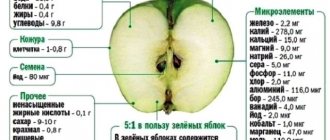Introduction
The question of first complementary feeding arises before every mother several months after the birth of the baby. It often causes a lot of controversy and disagreement. How to introduce complementary foods correctly? When is the best time to start this process and what to use first? How to make sure your baby is ready? When to introduce complementary foods during artificial feeding? Let's try to figure out what the World Health Organization (WHO) and the Russian Union of Pediatricians advise on this matter, and how to competently start complementary feeding in order to help the growing orgasm get acquainted with the new stage of its life without negative consequences.
What is the introduction of complementary foods?
In general, the process involves feeding infants foods that are needed by that age to supplement breast milk or formula. It is divided into two groups:
- Transition food. These are products that are specifically designed for the physiological needs of infants;
- Food from the family table. This includes foods that are consumed by all family members;
Gradually, children are accustomed to eating homemade food until it completely replaces breast milk/formula. On average, a healthy child by the age of 1 year is physically able to completely switch to food from the seed table. The child does not have the physiological maturity to immediately master such food, so to bridge this gap he needs special adaptive food (food of the transition period).
First complementary foods during breastfeeding and artificial feeding. When to start?
The question that worries everyone is when to introduce complementary foods during breastfeeding and bottle feeding?
According to the recommendations given by WHO, the first complementary feeding, for both types of nutrition, should begin if the child is six months old, in some cases it can be started a little earlier, but not earlier than 4 months. By this time, the baby’s body will be sufficiently formed and strengthened to begin mastering new food. The Union of Pediatricians of Russia advises starting to get acquainted with food between 4 and 6 months, but do not forget to take into account the individual characteristics of the baby.
Before 4 months, the baby’s body does not have the digestive enzymes and sufficient immunity necessary for a correct reaction to previously unknown food, which means the risk of allergic reactions increases. In addition, by about 5-6 months the baby gains the ability to swallow food rather than push it out of the mouth, which is associated with the development of its nervous system.
If you are wondering whether you need and how to properly introduce complementary foods at 4 months, it is better to seek recommendations from your pediatrician.
If you introduce complementary foods too late, a situation of micronutrient deficiency may arise in the child’s body, since breastfeeding and artificial feeding no longer meet all the necessary needs of the growing body.
Introduction of porridge into complementary foods.
The introduction of complementary foods into a baby's diet is a very complex issue that requires detailed consideration. In this article, we would like to dwell on one of the types of complementary foods - cereals, or more precisely, rice porridge, at what age should you start giving them, how to do it correctly, and what main criteria you need to pay attention to when choosing porridges.
When should you start giving your child cereal?
If the child is breastfed, the first complementary foods can be given after 6 months. Until this moment, the baby gets everything he needs from mother's milk.
All modern pediatricians advise adding porridge to the diet no earlier than six months, not only for those toddlers who are breastfed, but also for “artificial” ones. Until this point, digestive enzymes are simply not ready for new supplements and failures in the system are possible.
Porridges contain proteins, fats and carbohydrates, which can be difficult to digest at an earlier age and may cause intestinal problems. It is worth remembering that it is better to introduce cereals into the baby’s diet after becoming familiar with vegetable purees.
By 6 months, babies begin to actively grow and that is why nutrition should cover their energy needs. Cereals supply the growing body with the necessary amount of carbohydrates, they provide energy and nourish brain tissue. The fats contained in porridges protect against infectious diseases, and proteins ensure muscle strength. Vitamins and minerals help normalize metabolism. Porridges are rich in fiber, which improves the functioning of the digestive tract.
It is worth starting complementary feeding with one-ingredient, dairy-free cereals, adding breast milk or the usual formula. For example, Remedia baby cereals made in Israel may be suitable. During production, exclusively natural ingredients are used, in strict accordance with standards accepted throughout the world. They place their main emphasis on the production of dairy-free porridges, such as rice, buckwheat, oatmeal, cereal and semolina.
How to properly introduce complementary foods with cereals?
It is recommended to start getting acquainted with cereals with gluten-free cereals. Gluten (gluten) is a protein of plant origin, which is difficult for babies to digest due to an insufficient amount of enzymes and can manifest as bloating, increased gas formation, and abdominal pain.
Gluten-free cereals include: rice, buckwheat, corn. Gluten-containing grains include oats, wheat, rye, millet and barley.
It is recommended to start complementary feeding with rice and buckwheat porridge. Rice cereal has a low content of vegetable proteins, so it is easily digestible and is especially useful for toddlers with unstable stools. If a child is prone to constipation, it is worth starting complementary feeding with buckwheat; it contains a large amount of fiber, helping to stimulate digestion.
It is worth paying attention that the porridge must be made from one type of grain (monograin) without additives (fruits, nuts, honey). It should be prepared only with specially prepared baby water, for example Bebi. This water is extracted from an artesian well, it is purified and non-carbonated. According to macro- and microelement indicators, it is considered physiologically complete. And the multi-stage cleaning system serves as a barrier against the development of bacterial contaminants, which guarantees the high quality of the product and dishes prepared on it.
An approximate schedule for introducing cereals looks something like this:
- from 6-7 months you can introduce cereals such as rice, buckwheat and corn;
- from 7-8 months you can start combining some grains (provided that the child tolerates them well), oatmeal will also be useful;
- only starting from 10 months, millet and barley (barley) should be added;
- and after 1 year you can introduce your baby to semolina porridge.
Principles of introducing porridge:
Introducing cereals should be gradual, starting with 1 teaspoon, preferably for breakfast, supplementing the baby with breast milk or the usual formula. The scheme for introducing porridge into baby's complementary foods looks like this:
| 1st day | 1 teaspoon | 5 g |
| 2nd day | 2 teaspoons | 10 g |
| 3rd day | 3 teaspoons | 15 g |
| 4th day | 4 teaspoons | 20 g |
| 5th day | 50 ml | 50 g |
| 6th day | 100 ml | 100 g |
| 7th day | 150 ml | 150 g |
Types of cereal feeding:
- homemade porridge (cereals ground in a coffee grinder, cooked in water or milk by parents);
- instant porridges, which must be poured with boiling water and stirred until completely dissolved; for example, Baby Sitter Porridge, which meets the digestive needs of babies. They are suitable for them in terms of the composition of nutrients (proteins, fats, carbohydrates), enriched with microelements, minerals - iodine, iron, calcium, as well as vitamins - A, E, C, D, B vitamins, PP and others
- ready-made, canned porridge in jars. They come in dairy, dairy-free, and with the addition of vegetables and fruits. These porridges are convenient to use when visiting or on the road.
How to cook rice porridge with your own hands.
In order to prepare rice porridge at home, you need to have a little patience and know a few simple rules.
First of all, the cereal should be sorted, washed, dried, and ground in a coffee grinder or blender. Pour in cold water and cook over low heat until tender, stirring thoroughly to avoid lumps and burning.
After the porridge is cooked, you should pour in a little breast milk or your usual formula. Porridge is cooked in water for about 8 months, then you can try adding specialized baby milk; you can introduce whole milk to children no earlier than 1 year.
Later, when the child is ready, you can add fruit to the porridge to diversify and complement his menu. However, it will be much more convenient for parents to simply additionally introduce some kind of porridge with natural additives into the diet, for example, Humana porridge. They come in dairy and dairy-free varieties, with the addition of all kinds of fruits (banana and cherry, pear, peach and apple). It is also worth trying biscuit-wheat, multi-grain and rice porridge with wheat crackers.
Additives such as salt and sugar are not added to porridge for babies. Butter can be included in the diet only after you have become completely accustomed to a certain type of porridge. You should start with 1 gram, gradually increasing the volume to 5 grams.
Instant (factory) porridges.
This type of complementary food has gained popularity among parents and young gourmets due to its taste, ease of preparation, balanced composition, and wide range.
In order to prepare a complete breakfast or lunch, you just need to take a certain amount of dry powder indicated on the package and dilute it with warm boiled water, milk or formula.
Modern instant porridges are made from high-quality raw materials, contain proteins, fats and carbohydrates, and are enriched with vitamins and minerals (calcium, iron, iodine).
Add more complexity to your child's diet over time. Many manufacturers take care of a variety of menus for the little ones. For example, Heinz dairy-free porridges are presented in the widest range: there are rice, buckwheat, oatmeal, and multigrain porridges. There are milk and cereal porridges with the addition of various fruits (such as plum, banana, peach, apricot, prune, pear, cherry, apple, etc.) and vegetables (carrots, zucchini, pumpkin). You can also find porridge with the addition of beef.
Remember that before introducing any product into complementary foods, you should consult your pediatrician!
Rules for successful complementary feeding
Before introducing your baby to new foods, you need to understand some basic nuances of how to properly introduce complementary foods to your baby:
- Observe your baby's behavior, assessing his level of readiness. Does he try to sit? Has he developed the ability to swallow food rather than push it out, and has he developed an interest in food at the table?
- You should not offer previously unfamiliar products in the evening, because... in this case, you can miss possible negative reactions of the body and not react to them;
- Products that have not previously been introduced are given strictly one at a time. There is no need to introduce five new products in one day;
- We begin to include all new dishes with 0.5 tsp/l, and increase their volume throughout the week;
- Avoid adding previously unknown foods to your diet during periods of illness, vaccination, and in cases of sudden change of environment.
Complementary feeding at 6 months with artificial feeding
Healthy formula-fed infants begin introducing new foods at 4 months of age. This is necessary to prevent a lack of microelements and vitamins and prepare for adult food. Complementary feeding at 6 months with artificial feeding begins if the child was not ready or was sick.
Table of contents
|
Features of complementary feeding at 6 months of age
According to the WHO position, complementary feeding of bottle-fed infants begins at 4-6 months of age. Before 4 months, it is not advisable to introduce new foods, since the digestive tract is not yet formed and the immune system is weak.
It is also not recommended to start feeding later than six months. This will lead to a deficiency of vitamins, microelements, and growth retardation.
The formula, unlike human milk, has fewer essential nutrients.
To compensate for the deficiency of vitamins, proteins, and minerals, supplementary feeding begins before the age of six months.
If supplementary feeding begins only at six months, foods are given in the same order as from 4 months (first vegetables, fruits, porridge, butter, yolk, meat, and so on).
There are a number of rules that are followed during feeding:
• A new product is offered before formula feeding.
• They give complementary foods until 12.00-14.00 in the afternoon to see how the baby reacts.
• If the baby refuses, you cannot force it.
• The period for introducing 1 product is 14 days.
• Give only one-component dishes; you can combine 2 or more products only if they were previously introduced separately.
• Preference is given to industrial products that are specially designed and adapted for infants and are hypoallergenic.
• The consistency of the food is puree (first the food is more liquid, then it is made thicker).
They start with the most hypoallergenic products, after which they move on to allergenic ones.
First give 1-2 teaspoons, then gradually increase the volume of food to the age norm: 40-100-150 g, depending on the type. New foods should not be included during vaccination or illness.
Complementary feeding scheme
Healthy formula-fed babies are given complementary foods from the age of 4 months, so by six months the child has already been introduced to the main types of vegetables, fruits, buckwheat and oatmeal, and vegetable oil.
But it happens that complementary feeding is given according to indications from six months.
General scheme by month
| Product | Start of complementary feeding |
| vegetables | 4-6 months |
| juices, fruit purees | 4-6 months |
| porridge | 4-6 months |
| yolk | 4-6 months |
| oil | 4-6 months |
| meat | 4-6 months |
| cottage cheese | 4-6 months |
| cookies, crackers | 7 months |
| white bread | 8 months |
| fish | 8 months |
| kefir | 8 months |
Complementary feeding chart at 6 months
There is a list of products that are allowed for a 6-month-old child.
| Types (portion) | Age (months) |
| Vegetables 50-150 g | 4-6 |
| Juices, fruit purees 50-150 g | 4-6 |
| Porridge 50-150 g | 4-6 |
| Yolk ¼ | 4-6 |
| Oil 5 g | 4-6 |
| Cottage cheese 40 g | 6 |
| Meat 50-100 g | 6 |
Vegetables as the first complementary food from six months
From six months onwards, the most hypoallergenic vegetables begin to be produced, if complementary foods have not been introduced earlier. For the first product, zucchini is suitable. It does not cause allergies, does not have a strong taste, and contains many microelements, vitamins and fiber.
You need to introduce zucchini for 2 weeks. They start with 5 g, look at the child’s reaction, then increase the portion every day.
Next they give cauliflower. It contains dietary fiber and vitamins. The product begins to be given only after the introduction of zucchini.
First, they offer 1-2 teaspoons, then gradually increase the portion to 50 g. After introducing zucchini and cauliflower, they can be mixed into one dish. Further scheme for introducing vegetable purees:
- broccoli;
- asparagus cabbage;
- pumpkin.
Pumpkin is allowed only at the end of the sixth month. It is not advisable to start with pumpkin.
Fruits
Fruits are included in the form of juices and purees. The most hypoallergenic are apples and pears. First they give juices and apple puree.
After 2 weeks, add pear juices and purees. The next product is prunes. It is administered in the form of compote or puree.
It is not advisable to start feeding with fruits, as they have a very strong taste. After them, the baby can refuse vegetables and cereals.
Porridge: to give or not
Porridges are allowed from the age of 4 months, but they can be introduced from six months. More often, porridge is given after the introduction of the main types of vegetables.
First, dairy-free porridge is introduced, then after 2-4 weeks it is diluted with the mixture.
Only industrially adapted products are suitable for infants. Porridges prepared at home can seriously damage the stomach and intestines, since the fibers in them are coarse.
First they offer gluten-free porridges (buckwheat, rice, corn). Gluten-free types of dishes are introduced later.
Useful tips for mothers: FIRST FEEDINGS
They start with buckwheat porridge. First give 1-2 small spoons. Watch the baby.
If allergies and rashes do not appear, you can continue administration. After buckwheat they give corn and rice porridge. The following include gluten products:
- oatmeal;
- wheat;
- barley;
- millet
If there is anemia, lack of weight, porridge is given as the first complementary food. For anemia, buckwheat porridge is more suitable.
Oils, yolk
After introducing the porridge, you can give oils. First, include vegetable oil in the diet, but not more than 1 teaspoon per day.
Later they give cream - no more than 5 g per day. After the oils, you can include the yolk. Start with ¼, gradually increasing to ½.
Meat, cottage cheese
Meat and cottage cheese are indicated to be included by 6 months of age, provided that they are fed from 4 months.
If complementary feeding begins only at 6 months of age, then meat products are introduced after vegetables and cereals (approximately by 8 months). If an infant has anemia, meat complementary foods are given immediately after vegetables to compensate for the iron deficiency.
First, the most hypoallergenic and dietary types of meat products are included. These include:
- rabbit;
- turkey;
- chicken.
Meat feeding begins with turkey, then rabbit is included. Each type of meat is introduced for 2 weeks. After rabbit meat they give chicken. Next enter:
- beef;
- lamb
Cottage cheese is given after meat products. Start with one teaspoon, gradually increase the portion to 40 g.
Foods that should never be given at this age
There is a list of foods that should not be given at 6 months of age.
These include:
- kefir, milk - contain pure cow protein;
- cookies - a lot of carbohydrates;
- bread, especially rye bread - rye bread provokes bloating, wheat bread - constipation;
- beets – lowers blood pressure, loosens stools, irritates the stomach;
- fish is a very allergenic product, especially river fish;
- peas - causes severe bloating, an allergic reaction is possible;
- white cabbage – greatly increases gas formation in the intestines;
- potatoes - contains a lot of starch, introduced only at 7-8 months.
It is also not recommended to introduce carrots - it provokes jaundice and allergies.
Peaches, bananas, apricots, pineapples, oranges, tangerines are not allowed as they are allergenic. Juices from these fruits are also not included.
Mushrooms, shrimp, squid and other seafood should not be given. They also contain allergens, which can lead to rashes and allergic diseases in the future.
They don't give tomatoes or cucumbers. Cucumbers cause bloating, tomatoes cause allergies.
Infants six months of age should not eat salted, fried or smoked foods. Meat and vegetables should only be boiled.
It is not advisable to give egg white, it is very allergenic. Soups are not given, since the pancreas is not yet formed, and basic vegetables (potatoes, carrots, onions) have not been introduced.
Spices are not allowed for a child. They irritate the gastric mucosa and burden the digestive organs.
Sample menu at 6 months of age
Depending on when complementary foods were introduced, the diet may differ.
An approximate daily menu for a 6-month-old baby, if you started feeding the baby at 4 months:
| Eating | Compound |
| 6:00 (breakfast) | mixture 100 ml, oatmeal porridge – 50 g |
| 9:00 (second breakfast) | zucchini puree – 50 g, apple juice – 100 ml |
| 12:00 (lunch) | rabbit puree 5 g + broccoli puree 100 g |
| 15:00 (afternoon snack) | mixture 200 ml |
| 19:00 (dinner) | Turkey puree 50g + cauliflower puree 100g, pear juice – 50 ml |
| 21:00 (second dinner) | mixture 200 ml |
The foods are changed every day so that the child does not develop vitamin deficiencies.
The diet for a baby must be prepared by a doctor.
Tips for parents
It is necessary to introduce complementary foods only when the baby is ready. Readiness criteria:
- the baby does not have enough formula, he is hungry all the time, even after eating;
- reaches for adult food;
- constantly puts toys into mouth;
- sucks on a pacifier for a long time;
- sleeps poorly at night, even after feeding;
- often asks to eat at night;
- loses weight.
Before starting complementary feeding, it is recommended to consult with a pediatrician and plan a complementary feeding regimen for 1-2 months.
Be sure to follow the diet plan written by your doctor.
Each product has its own period of administration for children up to 1-2 years old. You should not include food that is not age appropriate in your diet.
If food is prepared for the baby at home, it is not salted. Boil vegetables for at least 40-60 minutes until the fibers become soft.
Food for a child must be ground in a blender. The meat is cooked for 1-1.5-2 hours depending on the type.
If an infant has an allergy, the product is excluded from the diet until 1-2 years of age. If you have an allergic reaction, dyspepsia or other manifestations, you should consult a doctor.
The introduction of complementary foods at six months must be taken responsibly.
Allergenic and fatty foods should not be introduced early (fish, shrimp, milk, egg whites, pork) so as not to disrupt the functioning of the digestive tract or provoke an allergic reaction.
Olga Kuznetsova
DOCTOR - PEDIATRIC Education: Siberian State Medical University. Certificate of specialist in the specialty "Pediatrics"
Complementary feeding calendar
How to start complementary feeding correctly? We present an indicative calendar for the introduction of complementary foods for children from 4-6 to 12 months. Its main points are based on the recommendations of the World Health Organization and the Union of Pediatricians of Russia.
Diet for a 4-5 month old baby
For those who are thinking about introducing their baby to new foods at 4 months, we advise you to consult your pediatrician. He will see if there is a need for this and give recommendations on where and how best to start.
How to properly introduce complementary foods at 5 months?
Complementary feeding at this age is best introduced with vegetable puree or porridge. These products are the easiest for a child's body to digest.
For example, you can start complementary feeding with vegetables with 0.5 tsp (3g) of zucchini puree. During the first week, you need to limit yourself to only this product for breakfast, increasing the volume every day and bringing it to 27 spoons (166 grams). When the volume of puree is more than 100 g. It is recommended to add 1 tsp of vegetable oil to it. We finish breakfast with breast milk or formula until completely saturated.
Next week we will begin introducing a new vegetable – cauliflower. We prepare two types of puree for breakfast - introduced zucchini and new cauliflower puree. First we offer 3 grams. new puree, and then add the previously introduced 166 grams. puree. Over the course of one week, introduce cauliflower entirely, replacing zucchini with it.
For the third week, broccoli puree is good. We also introduce 3 g. and feed the rest with the already familiar puree to a whole portion.
After your baby has successfully mastered vegetable purees, when you have already increased their volume to a whole serving, you can try making porridge for breakfast. For example, we introduce buckwheat for breakfast. We proceed in the same way, increasing the volume from 3 grams. up to 166g. per week with the addition of 1 tsp/l butter with 100 g. porridge. We eat the previously introduced vegetables in full for lunch.
How to properly introduce complementary foods at 6 months?
If by this period you have already introduced a number of products, then continue to use them, adding new ones to them.
Then you can add, for example, rice or buckwheat porridge, proceed in the same way as with puree. We take 0.5 spoons of new porridge, and feed the rest with the already introduced porridge with butter. We eat the previously introduced vegetables for lunch.
For lunch, you should offer new purees, such as pumpkin. At the same time, we leave breakfast unchanged, without introducing new types of cereals.
A wide selection of fruit and vegetable purees for children from 6 months, as well as a variety of cereals for children from 4 months, produced with an adapted milk formula based on goat's milk, is presented on our website. Due to the presence of prebiotics and a special DigestX complex, the risk of colic and constipation is reduced, the immune system is strengthened, energy metabolism and digestion in general are improved. And every baby likes the delicate creamy taste of Kabrita cereals and purees!
Diet of a 7 month old baby
Next, we include fruit (apple and pear) and meat purees (turkey and rabbit) in the child’s diet. We introduce fruit puree for breakfast, also starting from 0.5 tsp/l and increasing the volume to 10 tsp/l, and supplement with the previously introduced porridge.
We include rabbit meat puree after the applesauce has been completely introduced. We offer for breakfast starting from 0.5 tsp/l and slowly increasing to 8 tsp/l. We supplement the food with the previously introduced porridge.
When thinking about your baby’s nutrition, try to organize nutritious breakfasts and lunches for him, teaching him to eat at a certain time.
Diet for an 8 month old baby
Most likely, your baby will make his first attempts at feeding on his own around the age of eight months. Support your baby in this endeavor and give him small pieces of vegetables and fruits that he can hold in his hand on his own.
Also, this time is suitable for introducing fish, cottage cheese (no more than 50 g/day) and children’s kefir/biolact (up to 200 g/day) into the diet. For fish, give preference to cod, pollock, sea bass, salmon, pike perch or carp, and give it no more than twice a week.
You can start combining products with each other, adding, for example, berries to porridge or cottage cheese. We also begin to give a little bit at a time, gradually increasing the amount.
Diet of a child 9-12 months
By nine months, most of the foods needed now have most likely already been introduced, so continue to increase the baby’s diet, move away from the puree type and switch to a finely and coarsely ground consistency. As the year approaches, it’s great to start including fresh herbs from the garden in your diet.
At about one year of age, most children tend to pick up cutlery while sitting at the table independently and drink from a mug. Don’t disturb your child, but on the contrary, encourage his aspirations, even if it doesn’t work out well yet, because this is a complex skill that needs to be developed gradually, and an excellent workout for the brain.
WHO recommends continuing breastfeeding and formula feeding after the introduction of complementary foods.
Timing of introduction of complementary foods
— Alla Anatolyevna, tell us what the first complementary feeding is?
- Complementary feeding - any food other than breast milk or formula. Her baby gets to eventually stop breastfeeding or formula feeding. Complementary foods, as a rule, are foods of a thicker consistency than milk. Fruit juice is not considered complementary foods, it is a correction of the baby's nutrition. By introducing complementary foods, the mother begins to expand the baby’s diet.
— When should you start complementary feeding?
— The optimal period, the “golden age standard” for introducing the first complementary foods, is considered to be the age of 5.5-6 months. Until this age, the baby’s ejection reflex is triggered: when solid food enters his mouth, he seems to push it out with his tongue. Therefore, WHO does not recommend the early introduction of complementary foods before the age of 4.5-5 months. By six months, the ejection reflex disappears, but food interest appears, and the child tastes different solid foods for the first time.
— What is food interest, how to recognize it? What, besides age, can signal that a child is ready for the first feeding?
— From the point of view of a pediatrician, the child is ready for the first complementary feeding at 5.5-6 months
. This is the best age for the first feeding. The baby begins to slowly become interested in the world, looks into his parents’ plates, and looks at what the adults eat. He reaches out to food with his hands, begins to taste solid food for the first time, he is interested in trying - this is food interest. By observing the child, parents will see this interest. Emotional reactions to taste appear: the baby likes some tastes, others not. If the baby is 5-6 months old, it’s time to introduce complementary foods. If at this age the baby does not show interest in the parents’ food and refuses treats from the adults’ table, food interest has not yet appeared. But even in this case, complementary foods begin to be introduced from 6 months.
— Do WHO recommendations coincide with Russian standards for the timing of the introduction of first complementary foods?
- Yes, sure. All pediatricians are subject to the opinion of WHO experts; there are permanent WHO experts living in our country, this is a global practice, a standard.
— What if the baby does not receive the first complementary foods before the end of 6 months?
— In terms of nutritional value, breast milk and powdered milk formula, for example, MAMAKO® Premium formula, fully satisfy the child’s needs. Both breast milk and powdered formula contain the nutrients, calories and protein your baby needs to grow and develop. Many parents ask why introduce complementary foods at all. It is introduced to eventually give up breast milk or powdered formula. The mother gives complementary foods to gradually transition the child to regular food. You should not delay the introduction of complementary foods.
If you postpone the first feeding, the baby gets used to receiving either breast milk or powdered milk formula. His interest in food begins to slowly fade away. He gets used to the liquid consistency of milk, and then it is difficult to feed him some other, thicker food.
— Does the timing of introducing the first complementary foods depend on the type of feeding? That is, when should the first complementary foods be introduced to a breastfed baby, and when to a bottle-fed or mixed-fed baby?
— Among parents, and often among pediatricians, there is an opinion that breastfeeding delays the introduction of the first complementary foods. I recommend focusing not on the type of feeding, but on the condition of the child. Observe how the baby shows interest in food, how he reacts to pedagogical complementary feeding - getting acquainted with adult food. There are children who completely refuse the first spoons of complementary foods. When the first vegetable puree is given, the child categorically does not want to eat it, spits, and turns away from the spoon. In this case, do not give complementary foods for several days, and then offer them again. As a result, the child should still receive complementary foods and subsequently switch to regular food.
Porridge or puree? Where is the best place to start?
There is no exact answer to this question. You have the right to start as you wish, taking into account a number of recommendations:
- When introducing complementary foods, it is easier for babies to get used to vegetables first, since they are the most bland product;
- It is recommended to start with vegetable purees for children who have problems with excess weight, with anemia, rickets, frequent constipation and colic;
- Porridge is considered a heavier food for a baby’s developing digestive system;
- Pediatricians advise children who are underweight and predisposed to allergies to start introducing cereal into their diet;
First complementary foods while breastfeeding
Is your child very interested in food and loves to sit at the table? These are signs that he is ready to start complementary feeding. When and what foods to give as the first complementary foods when breastfeeding, so that the baby enjoys eating, says nutritionist, member of RoSNDP Anastasia Ivanovna Shalunova (and in addition, you will learn about the nutrition plan for children under 12 months). Don't worry: introducing complementary foods does not mean giving up breast milk. You can still breastfeed your baby for as long as you both want.
— Anastasia Ivanovna, what is called complementary feeding and is it possible to combine complementary feeding and breastfeeding?
— Complementary feeding is everything that is not mother’s milk or formula. Complementary feeding can be combined with breastfeeding, but it is important to consider the age of the child. It is better to start complementary feeding when food interest is formed (the child looks into his mother’s mouth, grabs a spoon with his hand, and is interested in the contents of the plate).
— When to introduce the first complementary foods when breastfeeding and what to give the baby for the first complementary foods?
- Everything is individual. When introducing solid food, mothers are conditionally guided by the complementary feeding calendar, which is recommended by pediatricians. It is also important to adequately perceive the situation in which the child is - complementary feeding can be started if the baby feels well
(no fever, constipation, diarrhea, etc.). In addition, it is not advisable to give complementary foods before or after vaccination.
Scheme of the first complementary feeding during breastfeeding
— How to understand that the baby is ready for the first feeding? Do I need to prepare my child for the introduction of new food?
— There is no universal way. You need to understand whether the child is hungry or not, and monitor his food interest. If you just start complementary feeding, it may not “take off”, since food interest in adult food is formed from 4 to 8 months. It is during this period that the child has the need to try a new product. And in order to interest him, parents must show by personal example how and what they eat.
— They say that a child can be given a teaspoon with some water. And if he begins to react in a special way, it means he is ready for complementary feeding.
- You need to watch how the child behaves with a spoon - plays or repeats the mother’s actions while eating. Initially, we can talk about the first pedagogical complementary feeding - the mother eats, and the child is nearby in an upright position and repeats her actions. Closer to six months, the spoon may contain the complementary food product itself (the child is given a spoon with food, and he repeats what the mother does).
Rules for the first complementary feeding when breastfeeding: what parents should and should not do
- The child must be hungry: first, complementary foods are given, then breastfeeding occurs.
- Complementary feeding begins with once a day.
- During the first feeding, one new product is introduced in the amount of half a teaspoon, then the portion is gradually increased.
- The next new product is introduced no earlier than 4-5 days after the previous one, in order to track the body’s reaction.
- During feeding, the baby is in a sitting position.
- You should not give complementary foods when the child is restless or psychologically unprepared for unfamiliar food. During a stressful situation (moving, vaccination), the child may not like the product and the child may not accept it.
Incorrectly introduced first complementary foods will affect the child's health. The functions of the gastrointestinal tract will be disrupted, which will manifest itself in the baby’s behavior or in the form of digestive disorders (diarrhea, constipation). Consequently, you will be forced to cancel the product with which you started complementary feeding and look for other options.
— Is it possible to give juices to a breastfed baby as complementary food?
— Despite the early age recommendations on the labels, neonatologists and nutritionists do not recommend starting the first complementary feeding with juices because they are sweet. The child’s taste buds will be distorted, and after drinking sweet juices, he may not want to eat bland vegetable purees or cereals.
First foods for breastfed babies
| For children who are underweight: gluten-free one-ingredient porridges - rice, corn, buckwheat. | Children of normal weight who are prone to constipation: vegetable purees - all types of cabbage, potatoes, zucchini; later - green peas, pumpkin, apple. |
Porridge preparation option:
| Option for preparing vegetable puree:
|
— Anastasia Ivanovna, is it true that a child will not eat vegetable purees after fruit purees? In what order is it better to give permitted foods?
- All babies are different. But most often, after sweet fruits, children are reluctant to eat bland foods. Therefore, the first feeding of a breastfed baby often begins with vegetable puree or porridge. Later, you can try fruits in the form of juices or fruit purees, for example, with cottage cheese. Some pediatricians recommend adding yolk, but I would leave it for complementary feeding from seven months
, because the enzymatic system in a small child has not yet been formed and undesirable reactions may occur - allergic or from the gastrointestinal tract.
Then ground meat purees (not lumps) are introduced, and fish purees are introduced closer to eight months
. According to the standards, fermented milk products are given from the age of seven months, but I recommend introducing all dairy products into the baby’s diet closer to one year. Not all children are physically ready to consume them due to the acidity and mineral salts. Then - crackers, bread, vegetable and butter. Any product is administered in small spoons with a gradual increase in portions.
— How to properly offer a child his first new food and what to do if he refuses it?
— Complementary feeding can be offered in a playful way, but it is better not to play around so that the child has a clear picture: he sat down to eat in order to satisfy his hunger. It’s good to sit at the table with the whole family so that the baby understands that at certain moments the family gets together and eats together. There is no need to persuade: if he wants, he eats, if he doesn’t want, he doesn’t eat.
With such persuasion as “eat a spoon for mom, for dad, for grandma, for grandpa,” the child may refuse to eat altogether. Let's try different foods at certain ages. And, of course, the mother needs to be mentally prepared for the fact that the same product will have to be given to the child in several versions if he initially refused the food offered.
— Is it possible to give a child complementary foods from jars or is it necessary to prepare purees at home?
— Companies that specifically deal with baby food have all the necessary facilities and preparation conditions, as well as fresh products. From one jar to another, the puree will have the same composition and taste. If you cook at home, you can’t track either the quality of the product or the temperature (overcooked today, undercooked tomorrow). All this will affect the child. Of course, if you have organic vegetables grown in your own garden, mom can cook the puree herself. But in reality, we are all limited in time, and it is difficult to cook constantly at home.
Jars are more convenient, especially if you need to go somewhere with your baby or go to the clinic. When choosing a puree, carefully study its composition. MAMAKO® goat milk baby purees are excellent for complementary feeding of breastfed children. Such purees are balanced in nutritional value, the amount of nutrients and are superior to the homemade version. In addition, they are packaged and stored without dyes or preservatives. Cotton when opening the vacuum packaging is proof that all stages and requirements for the quality of the product were met during production.
Complementary feeding is anything other than breast milk or infant formula. Complementary feeding begins when the baby is healthy and psychologically ready to accept a new product. But don’t panic if you started complementary feeding not at four months, but closer to five months: each child is unique and has his own preferences. As to what foods are allowed or prohibited for the first complementary feeding, you should follow the recommendations of pediatricians. Do not rush to give all the products at once - start with one, and with half a teaspoon once a day, gradually adding a portion. Manufacturers of canned food guarantee its quality, but you need to monitor expiration dates and focus on your perception if there is something you don’t like about the product.
Nutritionist Anastasia Ivanovna Shalunova
*The ideal food for an infant is mother's milk. WHO recommends exclusive breastfeeding for the first 6 months. MAMAKO® supports this recommendation. Before introducing new foods into your baby’s diet, consult a specialist.
Water for an infant
WHO advises not to give water to children who are only breastfed, because milk is fully capable of providing the baby with all the necessary elements for growth and development. An exception, of course, is made during hot weather and illness, then we give water little by little and carefully, from a spoon. Children who are fed with adapted milk formulas need water, but only at their own request; there is no need to force them to drink. Once you have decided to start giving complementary foods, it’s time to establish your child’s drinking regime. With the addition of new dishes to the diet, water is important for a small body for better absorption and comfortable digestion.
Developing taste
It is very important not just to feed the child, but to teach him to eat with pleasure. The Kabrita baby food manufacturer can help you in this matter (. They have a large assortment of high-quality purees and cereals for first feeding, and in addition, healthy products for further nutrition and shaping the taste of children.
The main thing you must achieve is the child’s interest in the food on your table, his desire to pick it up and try it on his own.
What should I do for this?
- It’s good when the baby eats at the same table with adults. Everyone eats, thereby setting an example for him;
- There is no need to force your baby to eat or lure him with cartoons and toys;
- The amount of food should increase only at the request of the baby;
- Try a variety of dishes with your child;
- Do not serve sugary drinks or offer cookies/waffles/candies before meals;
- Teach your baby to eat carefully and with cutlery;
- Do not keep your child at the table if he no longer wants to eat or indulges in food.
Teach your baby to feel food, its texture, shape and smells. Talk about the tastes of food; ask older children to talk about what they feel (sour, salty, sweet, bitter, crunchy, etc.).
Development of chewing skills
Many parents deliberately feed their children pureed and liquid food for a long time in order to reduce the risks of protests against pieces, scandals due to reluctance to eat on their own and fear that the baby will choke.
By 9-10 months, the child should definitely start eating more dense and solid foods. This skill is closely related to speech development, dental health and bite formation. And of course, by doing so you will open your child to the wonderful world of delicious food.
Start offering foods that won't break down or get stuck in your throat: banana, avocado, boiled potato, baked apple, etc. You will be surprised, but the child will master this skill very quickly if you do not interfere with it!
Instilling healthy eating habits
Do not forget that children follow the example of their parents in everything. If you are used to eating junk food, then don’t expect anything different from your child. If every day he sees a picture of how his parents eat cookies, candies and sausages instead of cereals and vegetables, naturally, the baby will also take a closer look at these products and want to try exactly what his adults eat.
If you want to raise a healthy child, then first of all you need to change your habits and try to set him a positive personal example.
What should you not give to infants?
There are a number of foods that children under one year old should completely avoid eating. Such products include primarily sugar, salt, foods that can be choked on - nuts, grapes, raw carrots, raisins, peas, etc., soda, juices, fruit drinks, compotes, whole milk, honey and semolina porridge. These products will bring absolutely no benefit to the child’s body, but can, on the contrary, cause harm.
We tried to fully cover the question of when it is possible to introduce complementary foods to a child and how to make this process so that as a result the child receives good health, pleasure from the learning process and correct eating behavior.
Let your children be healthy and happy!
- Manual with recommendations for introducing complementary foods from the World Health Organization
- Website of the Union of Pediatricians of Russia
Share on social media networks
Infant feeding table by month
If we turn to practice, WHO offers several hundred different scenarios for introducing complementary foods. The appropriate table and schedule of administration must be selected based on the individual characteristics of the child and the availability of products.
When compiling a complementary feeding scheme according to WHO in the form of tables, the organization’s specialists tried to take into account as much as possible the digestibility of products and their allergenicity.
The WHO complementary feeding regimen presented below is designed for the first three months (that is, for ages 6-9 months). New foods are introduced for breakfast, after which they are supplemented with milk until full. The rest of the meals go as usual. As portions increase and new products are introduced, proven ones are put aside for lunch. Afternoon snacks and dinners appear in the baby’s diet after 9 months.
In this version of the table, the first complementary food is zucchini puree.
The first week is the introduction of zucchini puree.
The second week is the introduction of cauliflower. For breakfast, the baby is offered two types of purees - first cabbage, then zucchini. Lunch and other meals - as usual (breast milk).
Third week – introduction of broccoli. For breakfast, two types of purees are prepared - broccoli and one of the already familiar ones, depending on the day. The remaining meals consist of breast milk (or formula for IV babies).
Fourth week – introduction of buckwheat porridge. Porridge is offered for breakfast, completed with breast milk. The baby receives the usual vegetable purees for lunch in the desired volume (standard serving size is 166 g).
Fifth week . Rice porridge is introduced. For breakfast, the baby is offered both dishes - first new, then familiar. If necessary, after porridge, you can supplement with milk until satiation. Vegetable purees are offered for lunch in the required volume (standard serving – 166g).
Sixth week . Introduction of corn porridge. For breakfast they offer first a new one, then one of the usual porridges. Vegetable purees are served at lunch and supplemented with milk if necessary.
Seventh week . For breakfast, the baby is served one of the tested porridges (standard portion); for lunch, pumpkin puree is introduced with the usual vegetables.
Eighth week. Applesauce is added to the menu. It is offered to the baby for breakfast, supplemented with one of the usual cereals and, if necessary, breast milk. For lunch, the child is served vegetable purees in a standard portion.
Ninth week . Millet porridge is introduced for breakfast, and vegetable purees (serving 166 g) for lunch.
Tenth week . Breakfast porridge is supplemented with pureed rabbit meat. For lunch, the baby is offered vegetable purees (166 g each) and 10 g of applesauce.
Eleventh week . Prunes are offered to your baby as an addition to porridge. For lunch, he eats vegetable purees (166 g each) and rabbit meat (50 g).
Twelfth week . For breakfast, another type of meat is added to the porridge - turkey. For lunch, the baby receives 166 g of vegetable puree + 60 g of fruit puree (apple or prune).
Thirteenth week. For breakfast, pear puree is introduced in addition to porridge. For lunch, vegetable puree (166 g) + meat (50 g) is served.
166 g is the optimal amount of low-calorie foods for a child aged 6-8 months. If there are a lot of calories, the portion is reduced to 125 g. When complementary foods are introduced, this volume is achieved gradually, taking into account the baby’s appetite, as a rule, this happens at about the age of 9 months.
Children on breastfeeding on demand often eat complementary foods worse, since they may not feel the need for it. In such cases, there is no need to rush - let him eat less, it’s okay. If a child is not gaining weight well, then it is recommended to supplement him with feeding earlier - from 5 months, since this already applies to medical indications for introducing complementary foods.











